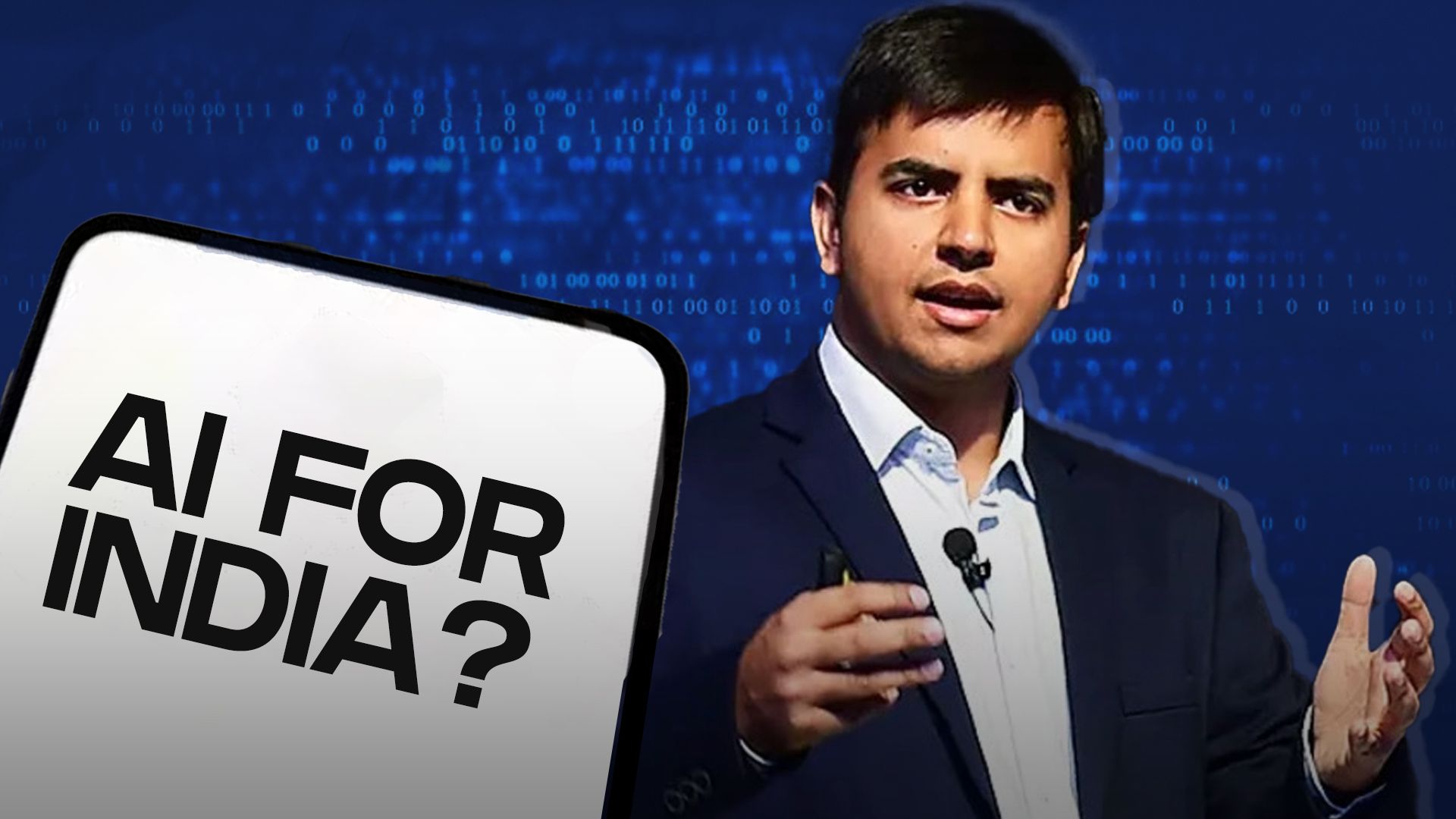Building a full stack AI for Indians, by Indians: Bhavish Aggarwal
India deserves an AI model that understands its uniqueness and diverse multicultural context
Key Takeaways
- The world is at the cusp of a technology revolution where several new technologies are converging together
- To harness the disruptive potential of AI for India, it should be trained on Indian datasets and languages
- India should have its own AI data stack, with not just the language model but also the layer of silicon and algorithms
- The opportunity window to build this infrastructure is now
Artificial intelligence is fast becoming a way businesses and work will evolve in the future. We have all observed the vast potential it holds, globally and in India, especially in industries such as education, healthcare, agriculture, and logistics. But Ola Cabs and co-founder and CEO Bhavish Aggarwal believes that in order for AI to be truly useful for Indians, there is a need to develop our own underlying AI infrastructure. An AI stack that caters to India’s unique socio-cultural fabric. And the time to do it is now.
“India's journey over the next 25 years has to be driven by technology. There are a few major technology revolutions happening around the world. If we can become the world leaders in some of these technologies of the future, we can really become the most productive, the most technologically advanced economy in the world,” Bhavish Aggarwal says in an exclusive interview with YourStory.
Bhavish should know. In addition to Ola Cabs, he is building Ola Electric, Ola Cell Technologies, and another company focused on AI and silicon (computing). The idea, he says, is to create India’s computing stack, silicon upwards. Which means developing capabilities in silicon or chip design, and the associated cloud infrastructure and AI models.
Whose humanity is it anyway?
Bhavish says the inspiration for starting his AI business was a talk by the founder of , the parent company of the popular generative AI-powered language model, ChatGPT.
The idea of building AI for the benefit of all humanity hit home. Bhavish asked himself, “Whose definition of humanity is it?” Because, he argues, there is no single definition of humanity. It is as much a social construct, as a cultural one.
“In order to benefit humanity through AI, it is important to have training data for the AI algorithm wedded to the population scale of the country,” he adds.
This essentially means that in a country as vast and diverse as India, AI models should be trained on the language, datasets and context of Indians.
Training AI right
The “intelligence” of machines or AI, is only as good as the training data it is put through. Current large language models (LLMs), the underlying infrastructure that enables AI to respond and work in natural language, have been trained largely in English.
“And the challenge here is about multiple languages. The languages here are not all written, they are verbal, so the technology has to be different,” say Bhavish.
India has 19,500 languages or dialects spoken in the country. In order for AI to effectively reach all parts of the population, it is imperative that the underlying models be trained in local Indian languages.
AI has three different parts: vision, speech and text. LLM is the text-based aspect of the technology. Several Indian languages are just spoken, without an accompanying script. So building an Indian AI means training the models differently, and increasing the focus on speech and vision-based training models.
While speech-based models can be trained to understand and respond better, vision-based AI technology is also equally important. Vision AI is an essential component of making autonomous vehicles run on Indian roads. “Indian roads are more data-rich than Western roads. So the computational capacity that we have to build is higher in India,” Bhavish adds.
Building an India AI Stack
AI, argues Bhavish, is not just a tool for productivity, but one for cultural appropriation or cultural dissemination as well. In order to democratise the access and benefits of AI for all Indians, therefore, “we need to have our own AI stack,” he says.
What does this entail? “We just train for Indian consumers on Indian datasets, which builds itself on Indian culture, and Indian value system,” explains Bhavish.
In addition to building a higher computational ability to train Indian AI models, it is also important to think of the connecting layers that enable AI to be effective.
“In AI, there will be the algorithmic and data layer, the cloud and infrastructure layer, and there will be silicon in the cloud. And there will be an edge layer also. Like how you have robots that work on silicon, all of this has to be integrated into one Indian solution, built for Indian purposes,” says Bhavish. His silicon focused AI business is a step towards this end.
As far as technology disruptions go, AI is giving us an opportunity to disrupt every single field and make it more efficient. The Ola founder believes the sooner we get AI to work for India’s unique context, the more we stand to gain from its true disruptive potential.
In all, Bhavish’s vision for AI is not restricted to Ola’s core businesses. He wants to build a full-stack AI with India’s context, in order to benefit Indians across the board. As an entrepreneur, he says he is giving it his all-his physical and mental faculties and resourcefulness.
Bhavish’s excitement about AI and its potential through this new venture is near palpable.
But he agrees that tech giants such as Microsoft and Google have what is often called an unfair advantage in building AI models. In addition to huge investments in the area, they also have vast data troves to train their AI on.
But instead of seeing that as a deterrent to the development of an India AI stack, Bhavish sees it as an opportunity. “We have to be smarter and we have to be faster,” he says. Spoken like a true entrepreneur.










